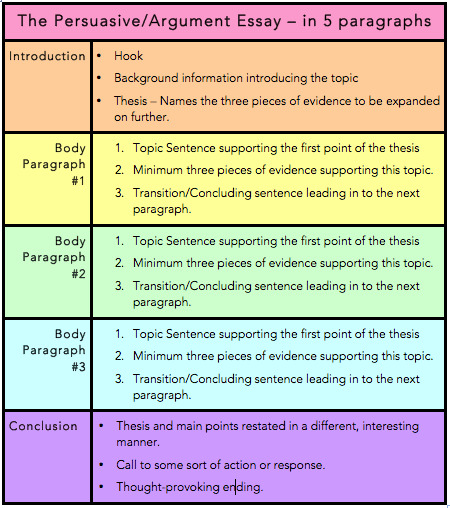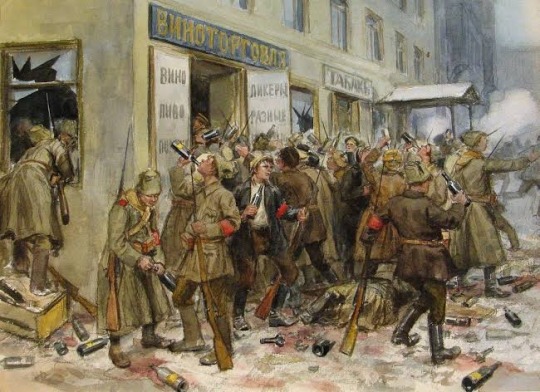Text
https://retrospectjournal.com/2021/01/31/from-creativity-to-repression-art-and-revolution-in-russia-1905-1935/amp/
0 notes
Text
“But the new art, which will lay out new landmarks, and which will expand the channel of creative art, can be created only by those who are at one with their epoch… ”
—Trotsky, Literature and Revolution
0 notes
Text
The Russian Revolution in 5 Great Paintings
Throughout the Russian Revolution, painters documented the radical events happening around them. They also created jarring propaganda that told more about reality than official records.
1. The Uprising, by Kliment Redko, 1924-25

2. The Petrograd Madonna, by Kuzma Petrov-Vodkin, 1922

3. Beat The Whites With The Red Wedge, by El Lissitzky, 1920

4. The Defense Of Petrograd, by Alexandr Deyneka, 1928

5. Lenin On The Tribune, by Aleksandr Gerasimov, 1930

0 notes
Text
https://www.nytimes.com/2017/12/23/opinion/russian-revolution-art-1917.html
0 notes
Text
The revolution was itself partly the work of artists. Some had worked towards social and/or political change since Russian artists had taken the role of social critic in the nineteenth century. In the 1870s the Wanderers’ paintings had exposed social injustice in daily life. By the early twentieth century a well-informed Russian avant-garde was in touch with Paris and Munich, the epicentres of innovatory art. Embracing modernism, it debated how to transform and modernise Tsarist Russia. Some, like Goncharova, adopted the vivid colour and formal simplifications of ‘primitive’ Russian peasant art, rather than those of African art favoured by the French and Germans. By 1913 Malevich had rejected all representation as antiquated, arguing that his revolutionary abstraction equated better to modern times. October 1917 brought radical cultural change. No longer for bourgeois and aristocrat, art would now be for the people. The art market was abolished and museums nationalised; the worker state became art’s patron.
By 1913 Malevich had rejected all representation as antiquated, arguing that his revolutionary abstraction equated better to modern times. October 1917 brought radical cultural change. No longer for bourgeois and aristocrat, art would now be for the people. The art market was abolished and museums nationalised; the worker state became art’s patron.
Initially, most avant-garde artists welcomed the revolution because Lenin’s idea of a political avant-garde as an agent for social change legitimised their own calls for radical action to combat conservative attitudes to art and society. For Marxists like Tatlin, here was an opportunity to make real and meaningful change. He recalled: 'To Accept (sic) or not accept the October Revolution. There was no such question for me. I organically merged into active creative, social and pedagogical life’.
Nevertheless, for the first time in the world, the avant-garde was appointed to positions of power. Despite the material hardships and shortages of War Communism (1917-1922) it launched into a dynamic transformation of art and its institutions. Tatlin headed IZO, the visual arts section of Lunacharsky’s commissariat. Recognising Kandinsky’s international status as an innovator, IZO gave him the important role of reorganising art education and museums. Together with the younger Rodchenko he founded 22 provincial museums and acquired the important collections of Russian avant-garde art which now grace museums in Russia and the ex-Soviet republics.
0 notes
Text
The Russian Revolution explores the period roughly between 1904 – 1921, however it is heavily weighted towards the years immediately leading up to 1917, and the February and October revolutions. The author provides an overview of early 20th century Russia and factors leading to the Revolution, from the brutal reality of Nicolas II's regime to the aftermath of the Bolshevik revolution and the origins of the Soviet Union in civil war.
The work is divided into four parts of unequal length: background, the period leading up to the 1917 revolution, the revolutionary events of 1917, and a short section on the aftermath; the body is bracketed with a prologue and epiloge where the author's perspective, goals and conclusions are presented. McMeekin focuses on the Bolsheviks, their leadership, and the actions and accidents which led them into power.
McMeekin devotes considerable attention to the three sided relationship between the Tsar, the conscript army, and the Russian people; he explores the weaknesses of the autocracy in the absence of intermediary institutions between them which would normally manage the relationship and temper reactions. This is seen as especially important in the context of popular discontent in Russia regarding World War I and the mutinous state of the Russian army by 1917. A second and complimentary area the author devotes considerable space to is the relationship between Lenin and Germany and the possible ways Germany may have used Lenin and the Bolsheviks to influence the Russian army and people to disrupt the Russian war effort and its relationship with the Entente powers.This gives the work an international perspective, looking beyond national borders and imperial boundaries and fiting the subject into the wider scope of events at the beginning of the twentieth century.

0 notes
Text
Expanding and preparing for essay writing .
Ideas:
* How revolution affected artist in Russia 1917-1920
* How art changed through-out the revolution
* Associations of artists of revolutionary Russia
* Avant-Garde
* How did art affect people during the revolution?
* Why art was involved into revolution?
* Artists protests
* How art was limited
0 notes
Text
https://retrospectjournal.com/2021/01/31/from-creativity-to-repression-art-and-revolution-in-russia-1905-1935/amp/
0 notes
Text
https://www.royalacademy.org.uk/article/art-and-the-russian-revolution
0 notes




















